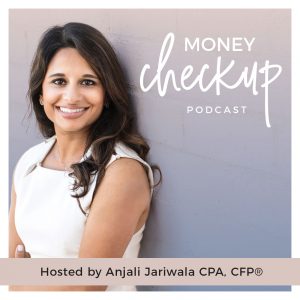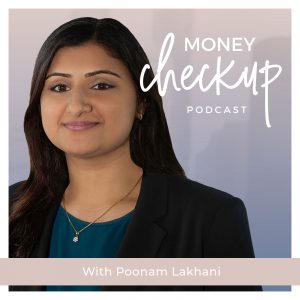Understanding life insurance for physicians is like creating an estate plan. Purchasing a life insurance policy is an important part of planning for your family’s future.
Life insurance is primarily about replacing lost income after someone’s death. A good life insurance policy will allow your family to continue meeting their obligations for years after your death, and give them plenty of time to adjust their spending if they need to make lifestyle changes.
But it’s also important that life insurance covers other new expenses — for example if something were to happen to a stay-at-home partner, the working partner may need to start paying for childcare or home healthcare in order to keep earning at the same level. For that reason, and because half of U.S. marriages do end in divorce, most adults ought to have life insurance policies.
If you don’t yet have life insurance, here’s a brief summary of your options. If you do, review your policy to make sure it covers what you want it to cover — and that it doesn’t cover items you may not need. Right-sizing your life insurance policy could help you save money now while providing the necessary protection for you and your family.
Group term policies through an employer
Most of us are first exposed to life insurance when it’s offered to us by an employer. Many employers will cover a policy that is one times your salary. There’s no reason not to take this insurance — it’s an additional benefit for your family in the event of a tragedy.
Beyond that, you may have the option to buy increased death benefits, usually in multiples of your salary. The cost of that additional coverage may increase by 20% to 30% every five to 10 years. That may not be enough coverage, and the increases will add up if you stay at the same company for a decade or more.
Most importantly, most group policies stay with the employer, so if you leave at any point, you cannot take the policy with you.
If you have a partner or dependents, talk to a financial advisor about your life insurance options.
Term life policies
Term life insurance is the simplest version of life insurance: You pay an annual premium for a set period of time, and if you die during that time, your family will receive a death benefit.
The primary purpose of a term life insurance policy is to serve as income replacement for a certain period of time — that is, if something were to happen to you today, your family would be able to maintain their standard of living for a set period of time.
After all, most of us plan to retire at some point, meaning we won’t be earning income from jobs forever. Term life insurance is meant to insure families to that point.
There are two options within term life insurance policies. One is a level life insurance policy, which requires a fixed premium every year for a certain period of time and provides a set benefit amount. This is the most common type of policy. The length of the term can vary depending on what your family’s needs are. If you’re 35 and plan to retire at 65, you may choose a 30-year policy that will cover your family for the rest of your working life. If you have 15 years left on your mortgage, you may choose a 15-year policy that would carry your family until the mortgage is paid off.
The other option is an annually renewing or annually increasing policy, in which premiums start out fairly low and then increase. The former option is most common; the latter might be an option if you have a short-term need for insurance or your cash flow is tight currently.
Term life insurance policies do not have cash value, and their premiums tend to be the lowest of the life insurance options available.
For most families, term insurance is sufficient, because the primary goal of life insurance is to replace lost income or supplement household expenses.
Permanent life insurance
If your goal is not merely to support your family until you retire, but rather to leave them a legacy, you may want a permanent life insurance policy instead. For example, if you have children or family members with special needs or who need supportive care, a permanent life insurance policy is a way to provide for them for as long as you can.
Other permanent policyholders may wish to leave their family a financial legacy. Life insurance can be set up outside your taxable estate and its benefits are income tax-free, which can make it a useful vehicle for leaving resources to your children. However, premiums for permanent life insurance can be very expensive — and some buyers end up paying those premiums at the expense of other savings options.
Many people who hold permanent life insurance policies may have been sold these policies unbeknownst to them. Insurance agents often earn hefty premium payments for permanent policies. If someone offers you a permanent policy, ask yourself: Do you want to make sure this policy is around for your entire lifetime? If that isn’t essential, term life insurance is probably sufficient for you.
There are several options under the permanent life insurance umbrella, including:
Whole life insurance
Whole life insurance is a permanent life insurance policy that will cover you for, well, your whole life. You will pay a fixed premium every year as long as you live.
Along the way, however, you may be able to benefit from the cash value of the policy. For example, say you have a $1 million whole life insurance policy. Every year, the cost of having $1 of life insurance increases, because the insurer becomes more and more likely to have to pay benefits. But as you make payments, you build up cash within the policy. For example, once you’ve paid $100,000 toward your $1 million policy, the costs of insurance are only on the remaining $900,000. The cost per dollar might be going up, but the insurance company is on the hook for a smaller amount of money, which helps keep premiums level.
If you need to cancel your policy, many insurers will pay out the cash value to you, less possible surrender charges.
Universal life
Universal life insurance policies are similar to whole life insurance policies, but with one key difference: Universal life policies have flexible premiums. These are also called adjustable life insurance policies.
With a universal life policy, you can pay premiums at any time and in any amount, within your insurer’s limits. You also may be able to modify the amount of your death benefit.
Variable life
In both whole life and universal life insurance policies, insurers keep the policyholder’s cash value in a general account. The insurer then invests those funds. Generally speaking, these investments are tightly regulated, and earn 3% or 4% on average annually.
Variable life insurance policies were designed during the 1980s when the stock market was booming. In these cases, the policyholder either has whole life or universal life insurance. Then, however, the policyholder gets to decide how her cash values are invested. She could invest in the S&P 500, small international index funds, or another investment of her choosing — often riskier investments than what insurers make on their own, but potentially more lucrative too.
Variable policies are most common among families who want a permanent life insurance policy and control over how the money is invested.
How much life insurance does someone need?
A good place to start is multiplying your income by 10. For example, if you earn $100,000 per year, you would consider a $1 million life insurance policy. That will likely give your family a lot of breathing room, allowing them to meet obligations and giving them time to adjust their spending if necessary.
If you are under 40, insurance companies may be willing to consider you for policies worth much more than 10 times your income. Think about it: If you’re 40 years old and plan to retire at 65, that’s 25 years of income. If a policy that size is available, try to get a policy worth as much as you’d earn in the remainder of your working life.
You also have the option to layer term life insurance policies in a way that tapers your death benefits, as well as your premiums, over time. The difference between you or your partner passing away this year and a death when you’re 60 is significant. The younger you are, the more your family will feel the effects of your or your partner’s lost income.
At the same time, the younger you are, the better rate you’re likely to qualify for. Women should purchase life insurance before getting pregnant for the first time in case complications arise during pregnancy.
For very high-income families, these scales may not apply in the same way. Even if you earn $1 million per year, insurance companies may be wary of writing a $25 million policy. At a certain point, you may need to plan for the possibility of a lifestyle change. Life insurance can ease that transition by buying you time to figure out what your life may look like going forward.
There are lots of extenuating circumstances that could change your life insurance needs or the options available to you. Insurance underwriters are typically willing to consider options in those cases.
Talk to your financial planner about how much life insurance you need, as well as how you can structure your policy or policies to meet your family’s needs.
There is a lot to know about life insurance for physicians, so I hope you enjoyed this blog! While you’re at it, check out Look For These Gaps in Your Disability Insurance Coverage to learn more about your options!




